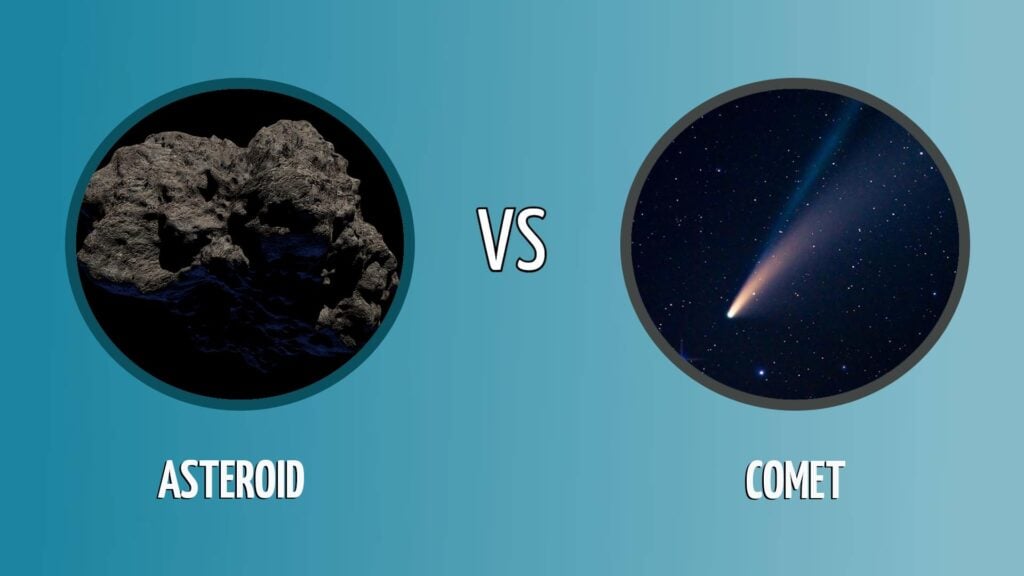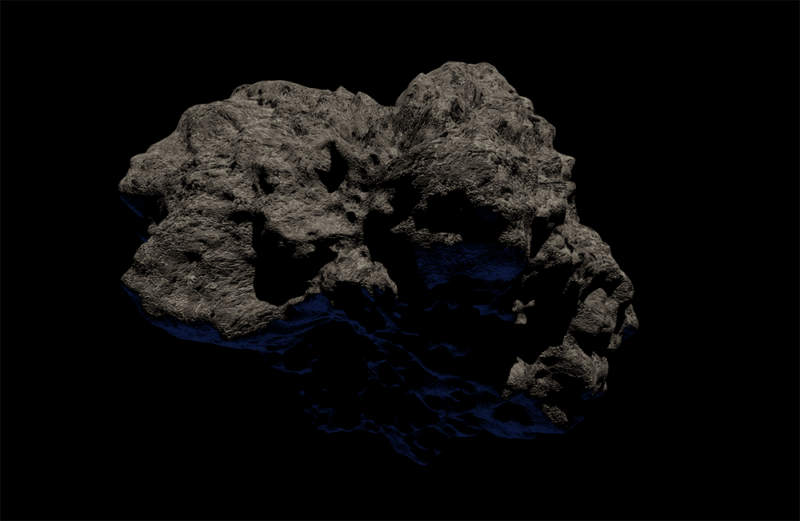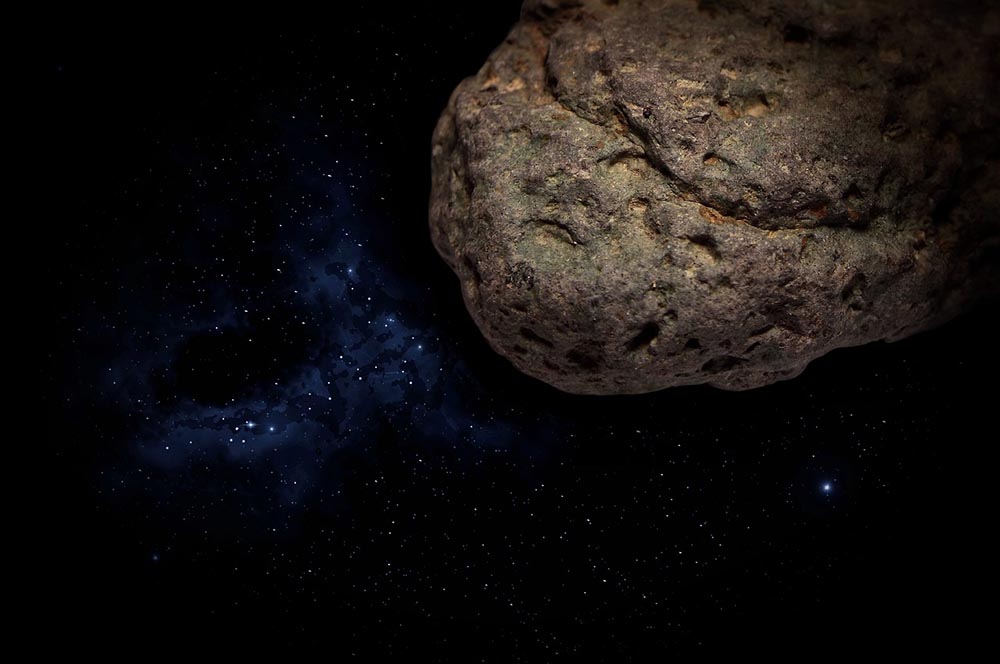Asteroid vs. Comet: What’s the Difference?
Last Updated on

Space seems pretty empty, but if you look around long enough, you’ll start to spot various planetary objects, such as asteroids and comets. But did you know that asteroids and comets are not the same things?
They’re completely different planetary bodies, and while they have a few things in common, they earn their distinct classifications.
There can be quite a bit of confusion about this topic, so we developed this guide to break it all down for you.

Overview of Asteroid
In short, an asteroid is a planetary object made up of metals and other rocky materials. Asteroids formed during the early history of the solar system, but they formed close enough to the Sun to burn off any ice that they might have.
While it’s unknown how asteroids got to their current locations, we do know that they’re closer to the Earth than comets.
There are also a large number of them. Currently, NASA knows and tracks over 1.1 million asteroids in our solar system alone!
Most of the asteroids in the solar system reside between Mars and Jupiter, in an area known as the asteroid belt.

How Big Are Asteroids?
There are many asteroids out there, and due to their sheer numbers, trying to provide an average size is a bit challenging.
The largest known asteroid, Vesta, has a diameter of 329 miles! For reference, that’s twice the size of California. Conversely, some asteroids have a diameter that’s smaller than 33 feet.
Also, while Vesta is the largest asteroid in the asteroid belt, it’s not the largest object there. That title falls to Ceres, a dwarf planet with a diameter of 592 miles. In fact, Ceres is so massive, it accounts for 25% of the asteroid belt’s total mass.
What Are the Different Compositions of Asteroids?
The composition of asteroids falls into three different categories: C-type, S-types, and M-types.
C-type asteroids are the most common types of asteroids, and they consist of clay and silicate rocks. S-type asteroids also consist of silicate rocks, which have nickel and iron instead of clay. Finally, M-type asteroids are almost all metallic. They consist of both nickel and iron.

Overview of Comet
Comets are similar to asteroids in many ways, but the main difference is that they consist of frozen gases, rock, and dust. Ice is common on comets because when they formed during the early days of the solar system, they formed far away from the Sun, which never had the chance to melt the ice and frozen gases. It’s also why most asteroids reside between Mars and Jupiter, and most comets reside much farther away, in the Oort Cloud.
The Oort Cloud might have billions or even trillions of objects. It’s a spherical ball surrounding the entire solar system. The Oort Cloud is incredibly far away, though, between 2,000 and 100,000 AU from the Sun. For reference, Pluto resides between 30 and 50 AU from the Sun, depending on where it’s at in its orbit.
It’s also worth noting that while the Oort Cloud matches all our observations, and there are tons of evidence to support it, since we can’t physically see it, it’s only theorized.

How Big Are Comets?
Just like with asteroids, the size of comets varies quite a bit. Complicating matters is that while there are an estimated 1 trillion comets out there, we’ve spotted fewer than 4,000 of them. So, we don’t have a large sample size, and it’s unlikely that we’ve spotted the largest comet out there.
However, Hubble did spot a comet about 85 miles across, and previously, it spotted a comet about 60 miles across. However, comets can also be much smaller. In fact, they’re often only a few dozen feet across!

How Can You Tell the Difference Between an Asteroid and a Comet?
Since we can’t go up into space to check out each asteroid and comet, how can we tell the two apart? The answer is simpler than you might think. The only comets that we’ve spotted travel in an orbit that brings them close to the Sun and then takes them far away again.
These elliptical orbits cause the comets to heat up when they get close to the Sun, and this heat burns off some of the ice and frozen gas inside the comet. When this happens, it leaves a “trail” behind, which is clearly visible when you’re viewing a comet.
Since asteroids don’t have any frozen gases to burn off, they don’t leave a trail when you’re viewing them!

Are Asteroids or Comets More Dangerous?
One being more dangerous than the other has to do with its speed. Comets travel in from the Oort Cloud, and as they approach the Sun, they burn off frozen elements and are constantly speeding up.
Asteroids are in a stable orbit and stay roughly the same speed. So, if a comet hits the Earth, it’s likely traveling far faster than an asteroid would.
Also, but most asteroids hit the Earth with a glancing blow. If a comet ever intersects, there’s a good chance that it will be a head-on collision. A comet would cause nine times as much damage as an asteroid if it hit the Earth! The good news is that most comets are billions upon billions of miles away, safely nestled in the Oort Cloud.
How Many Times Has an Asteroid Hit Earth?
While you don’t have to worry too much about comet impacts, did you know that 500 meteorites reach the surface of the Earth each year? Asteroids become meteorites when they pass through Earth’s atmosphere and are essentially small pieces left behind.
That said, most meteorites are too small to cause any real damage. In fact, we only recover about 10 of them each year.

Where Are Asteroids and Comets in Our Solar System?
One of the most notable differences between an asteroid and a comet is where they are most commonly found in our solar system. Asteroids typically reside in the asteroid belt between Mars and Jupiter, although you can find quite a few “trojan” asteroids.
Mars, Jupiter, and Saturn all have trojan asteroids in fixed orbits behind the planets. But most comets reside billions of miles away inside the Oort Cloud.
Occasionally, comets will venture through a closer region in the solar system, but it takes them centuries or even longer to complete their orbits and come back.
- Stable orbit
- No visible trail
- Made of metals and rocky materials
- Over 1.1 million confirmed asteroids
- Fewer than 4,000 confirmed comets
- Leaves a visible trail
- Made from frozen gasses and materials
- Estimated 1 trillion comets

Conclusion
Now that you know more about asteroids and comets, the next time that they get brought up in conversation, you’ll know exactly what you’re talking about and can perhaps even teach other people a thing or two!
They’re both cool objects that formed during the early days of the solar system, but each has its own characteristics!
Featured Image Credit: (L) AlexAntropov86, Pixabay | (R) Justin W, Unsplash
About the Author Robert Sparks
Robert’s obsession with all things optical started early in life, when his optician father would bring home prototypes for Robert to play with. Nowadays, Robert is dedicated to helping others find the right optics for their needs. His hobbies include astronomy, astrophysics, and model building. Originally from Newark, NJ, he resides in Santa Fe, New Mexico, where the nighttime skies are filled with glittering stars.
Related Articles:
15 Crucial Facts About Ultraviolet Rays & the Sun
What Constellation Is Spica In? The Interesting Answer!
10 Interesting Leo Constellation Facts, Myths, and FAQs
15 Interesting Pegasus Constellation Facts, Myths, and FAQs
6 Interesting Sagittarius Constellation Facts, Myths, and FAQs in 2024!
What Are Constellations? Where Did They Come From?
8 Interesting Libra Constellation Facts, Myths, and FAQs
What Is Infrared Radiation? Science-Based Facts & FAQ
